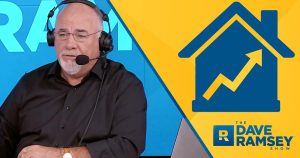PhotoAlto/Ale Ventura/GettyImages; Illustration by Hunter Newton/Bankrate
A savings account is often the best place to set aside funds for emergencies and short-term financial goals. It provides easy access to your money, and some savings accounts even earn interest rates these days that outpace inflation.
Standard savings accounts typically earn a variable annual percentage yield (APY), which can fluctuate over time based on economic conditions and whether the Federal Reserve raises or lowers rates.
Not all savings accounts are created equal, however, as rates often vary starkly among banks. Here we’ll show what a large sum of $100,000 can earn you in a year right now in a high-yield savings account, compared with lower-yielding accounts.
For illustrative purposes, our example rates remain the same, although in the real world many banks change their savings account rates once or more in a year. Our examples also assume no funds are added to or withdrawn from the account over the year.
| Type of savings account | Typical APY | Interest on $100,000 after 1 year | Total amount in savings account after 1 year |
|---|---|---|---|
| Savings account paying competitive rates | 4.60% | $4,600 | $104,600 |
| Savings account paying the national average | 0.59% | $590 | $100,590 |
| Savings accounts from various big brick-and-mortar banks | 0.01% | $10 | $100,010 |
National average savings account rates
The national average APY for savings accounts is currently 0.59 percent as of August 19. Having $100,000 in a savings account with this rate will earn you around $590 after a year, for a total of $100,590.
- Type of account: Savings account
- Total amount deposited: $100,000
- APY: 0.59%
- Total interest after one year: $590
- Total account balance after one year: $100,590
While this average APY of 0.59 percent is 59 times greater than the 0.01 percent often paid by large brick-and-mortar banks, it’s still less than eight times what you could earn with a highly competitive account.
Competitive savings account rates
The best widely available high-yield savings accounts currently earn an APY of around 4.60 percent. An amount of $100,000 in an account earning this rate will earn around $4,600 after a year, for a total of $104,600.
- Type of account: Savings account
- Total amount deposited: $100,000
- APY: 4.60%
- Total interest after one year: $4,600
- Total account balance after one year: $104,600
Online banks are where you’re likely to find such high rates. A few highly competitive accounts even earn 5 percent APY or higher.
Savings account rates from big banks
Big banks with a considerable branch footprint tend to offer lackluster rates that are often near 0 percent. Keeping a significant sum of money in such a savings account will provide you with a mere fraction of the interest you’ll get from a competitive account.
A sum of $100,000 in an account that earns an APY of just 0.01 percent will provide you with only around $10 in interest after a year’s time.
- Type of account: Savings account
- Total amount deposited: $100,000
- APY: 0.01%
- Total interest after one year: $10
- Total account balance after one year: $100,010
Examples of banks with savings accounts that currently earn a 0.01 percent APY include Chase Bank and Bank of America. A competitive yield of 4.60 percent is 460 times greater than such a rock-bottom yield.
Where to find the best high-yield savings account
It pays to shop around to find an account that pays the best yield — especially if you’re depositing a sum as large as $100,000. Accounts that earn high APYs can often be found at online banks such as Bask Bank, CIT Bank and Citizens Access.
Other features you may find important in a bank include fee-free ATM access, 24/7 customer phone support and a highly rated mobile banking app. Don’t forget to make sure your money’s with a federally insured bank or credit union.
Other accounts that are beating inflation
It’s not difficult these days to find a savings account that outpaces the annual inflation rate, which is currently at 2.9 percent. Certificates of deposit (CDs) are another type of account that may also earn yields greater than the inflation rate. The best one-year CDs, for instance, currently earn APYs of up to 5.25 percent.
Keep in mind, however, that paying taxes on savings account interest and CD interest will eat into your earnings, putting a dent in your overall return.
Bottom line
Depositing $100,000 into a competitive savings account can earn you enough interest in a year to take a nice vacation, whereas putting it into an account with a lackluster rate won’t even generate enough to pay for a single dinner out. You’ll thank yourself in a year for having shopped around for the best rate.
–Freelance writer Allison Martin updated this article.
Read the full article here
















